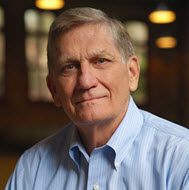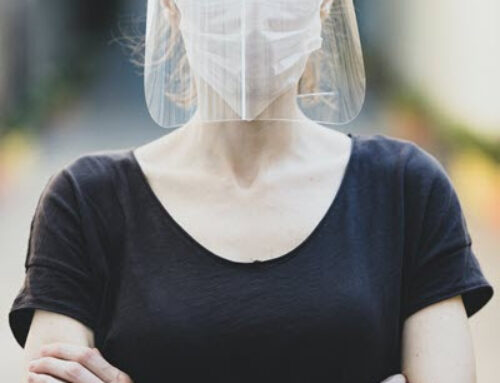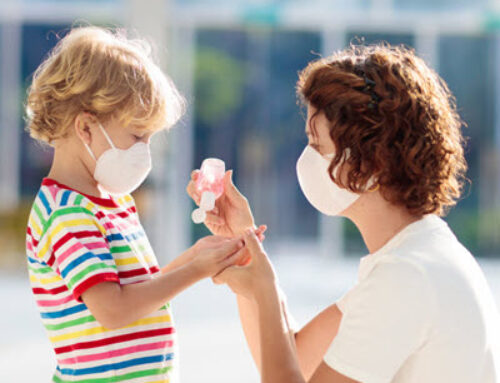 According to the National Mental Health Information Center, anxiety disorders are among the most common mental, emotional and behavioral problems to occur during childhood and adolescence. About 13 out of every 100 children and adolescents ages 9 to 17 experience some kind of anxiety disorder; girls are affected more than boys. If left untreated, these disorders can lead to the inability to finish school, impaired social relations, low self-esteem, and eventually, anxiety disorders in adulthood.
According to the National Mental Health Information Center, anxiety disorders are among the most common mental, emotional and behavioral problems to occur during childhood and adolescence. About 13 out of every 100 children and adolescents ages 9 to 17 experience some kind of anxiety disorder; girls are affected more than boys. If left untreated, these disorders can lead to the inability to finish school, impaired social relations, low self-esteem, and eventually, anxiety disorders in adulthood.
The onset of childhood anxiety usually begins between the ages of six and eight. Children at this age typically become less afraid of the dark and other imaginary dangers, and they become more afraid and anxious about performance in school and interactions with friends.
Some studies suggest that anxiety disorders in children are heritable, particularly from parents that have met anxiety disorder criteria themselves. But there is no way to prove whether the disorders are a result of biology, the environment, or both.
Below is a brief description of several types of anxiety disorders diagnosable in children and adolescents:
Overanxious disorder of childhood: This is similar to adult generalized anxiety disorder (GAD). Children and adolescents with this disorder engage in unrealistic and extreme worry about almost everything – their academic performance, athletic capability, even punctuality. Tense, self-conscious and having a strong desire for reassurance, these young people may complain about aches and pains that have no physical cause.
Panic disorder: In children and young teenagers, panic is rare. Rates begin to rise in older adolescents, particularly girls. As they can for adults, repeated panic attacks can be a sign of panic disorder. These attacks may be accompanied by symptoms that include a pounding heartbeat, dizziness, nausea, and feelings of imminent harm or death, accompanied by intense fear.
Obsessive-compulsive disorder (OCD): Like OCD adults, children and adolescents with OCD become trapped in patterns of repetitive thoughts and actions that are difficult to stop. These actions may include repeated hand washing, counting, hair pulling, nail biting, repetitive questioning, arranging and rearranging objects, and a strong need to control others and their environment. Children and adolescents often have much higher rates of aggressive obsessions, such as thoughts of harming themselves or others, and sexual acting out. Childhood and adolescent OCD is highly co-morbid with mood, anxiety, tic and disruptive behavior disorders.
The National Institute of Mental Health (NIMH) suggests that nearly 10 percent of adult OCD sufferers have had symptoms since the ages of five to 10. More than 20 percent have had them by ages 10 to 15. And more than 40 percent had them by ages 15 to 20. In all, approximately 2 percent of the general population of children and adolescents meet OCD criteria.
Separation anxiety disorder: Most often, this disorder manifests as school phobia, not wanting to attend camp, or even stay at a friend’s house for fear of leaving their parents. These children are frequently described as “clingy.” This disorder can be accompanied by sadness, withdrawal or a baseless fear of losing a family member to death or other permanent separation.
PTSD. The symptoms of post-traumatic stress disorder in children are similar to those in adults, with the addition of manifestations such as “monster nightmares,” and re-enacting a stressful event through play. Children and adolescents can develop PTSD after experiencing physical or sexual abuse; being a victim of or witnessing violence; and living through a natural or manmade disaster (hurricane, bombing, etc.). In young children, domestic violence is the most common cause of PTSD.
Medication Management of Pediatric Anxiety Disorders
Studies on the medication management of anxiety disorders in youth are sparse and inconclusive, and there are few specific guidelines for treating them. While benzodiazepines are used to treat anxiety and sleeplessness in children, the data supporting their use is sparse. While some anecdotal evidence has suggested possible benefit from Buspar (buspirone) in children, this continues to be unproven. Antihistamines such as Benadryl (diphenhydramine) and Vistaril (hydroxyzine) have been used for decades to ameliorate anxiety symptoms in psychiatrically disturbed children. Anafranil (clomipramine), Luvox (fluvoxamine) and Zoloft (sertraline) have FDA indications for children and adolescents with OCD. Experience with the SSRIs in controlled pediatric studies has led clinicians to consider these agents for treating non-OCD anxiety disorders as well. Controlled studies and supportive data are significantly lacking in the treatment of pediatric anxiety disorders with the beta-blockers.
Cognitive-behavioral interventions have proven to be effective for a majority of children and adolescents with anxiety disorders. Between 50 and 80 percent of children respond to well designed and effectively employed CBT treatment models, and at the completion of treatment, no longer meet diagnostic criteria for the presenting anxiety disorder.





Leave A Comment
You must be logged in to post a comment.